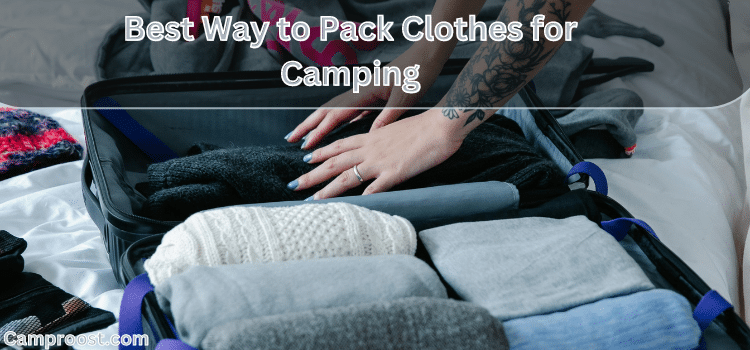Are you making plans for a thrilling camping journey? One of the important components of a successful camping experience is packing your clothes effectively. Knowing the best way to pack clothes for camping guarantees that you have everything you need while maximizing space and keeping your items organized. We will guide you through the process of packing clothes for camping, providing you with valuable recommendations and hints. So let’s dive in and make sure your camping wardrobe is well-prepared!
Importance of Packing Clothes Properly for camping
When heading out for a camping journey, having the proper clothing can significantly enhance your comfort and enjoyment. Packing clothes well not only guarantees that you have everything you need but also enables optimizing space in your backpack or suitcase. Efficient packing allows you to carry extra critical gadgets without adding needless weight or bulk. Additionally, a well-prepared wardrobe makes it easier to find specific items when you need them.
Essential Clothing Items for Camping
Before we delve into the packing technique, it’s vital to pick out the essential clothing items you need to deliver for your camping experience. These objects may additionally vary depending on the weather, period of your ride, and sports you propose to interact in. Here are some key objects to bear in mind:
- Comfortable T-shirts and lengthy-sleeved shirts
- Lightweight pants or shorts
- Insulating layers (fleece or down jackets)
- Waterproof or waterproof outerwear
- Moisture-wicking socks
- Sturdy hiking boots or shoes
- Hats, gloves, and scarves for chillier climate
- Swimwear (if relevant)
- Sleepwear and undergarments
- Extra pairs of socks

Choose Lightweight and Quick-Drying Fabrics
When packing garments for camping, it is vital to prioritize lightweight and quick-drying materials. These materials are particularly beneficial, especially if you encounter sudden rain or engage in water-based activities. Fabrics such as nylon, polyester, and merino wool are excellent choices as they are lightweight, breathable, and dry quickly. Avoid heavy cotton fabrics as they retain moisture and take a long time to dry, which can be uncomfortable and lead to hypothermia in cooler conditions.
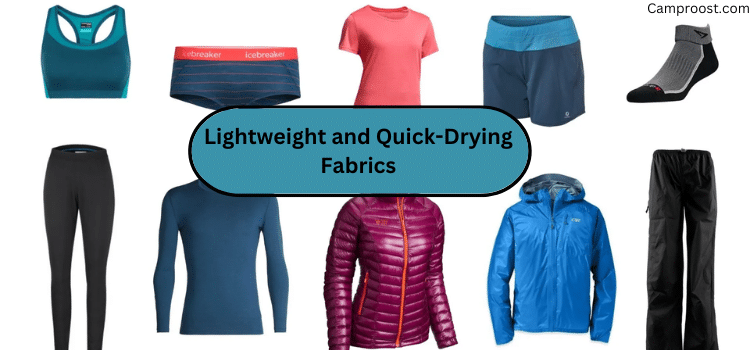
Roll or Fold: Which one is Best Way to Pack Clothes for Camping?
The eternal debate between rolling and folding clothes has been ongoing for years. Both methods have their merits, so let’s explore the benefits of each:
Rolling
Rolling garments is a space-saving technique that minimizes wrinkles. It works especially well for items like t-shirts, shorts, and undergarments. Rolled garments can be easily stacked and offer a clear overview of your dresser.
Folding
Folding garments allows for neater packing and is suitable for bulkier items such as sweaters or jackets. It helps maintain the garment’s shape and reduces the risk of creasing. Folded garments can be organized in a way that optimizes the space in your backpack or suitcase.
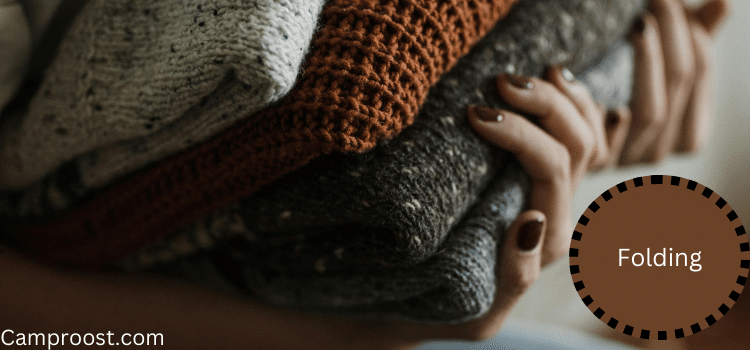
You can use a combination of rolling and folding to suit your preferences. Experiment with different strategies to find what works best for your clothing items and available storage space.”
Organize Clothes in Ziplock Bags or Packing Cubes
To hold your clothes nicely organized and without problems reachable, undergo in thoughts the usage of ziplock baggage or packing cubes. These storage solutions help compartmentalize your fabric cabinet, making it less difficult to find out precise items without developing a large number. Separate your garments into classes, inclusive of tops, bottoms, and undergarments, and location them in man or woman bags or cubes. This way, you can retrieve what you need while no longer having to unpack your complete bag.

Utilize Space Inside Your Footwear
Make the maximum distance inside your shoes by stuffing small items like socks, undies, or rolled-up accessories. Not only does this maximize area efficiency, but it also enables keep the form of your shoes or boots. You can also make use of the interior of hats or rolled-up clothes as additional storage areas for smaller objects.
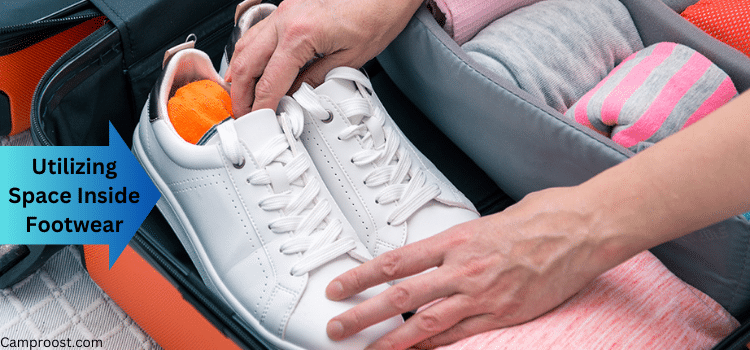
Layering Technique: Be Prepared for Weather Changes
Camping regularly exposes you to unpredictable weather conditions. To stay prepared, embrace the layering technique. Layering entails sporting more than one lightweight garment that may be easily brought or eliminated depending on the temperature. Start with a moisture-wicking base layer, accompanied by insulating layers, and end with a water-proof or windproof outer layer. This way, you can adapt to converting climate conditions and preserve top-rated comfort at some point in your camping experience.
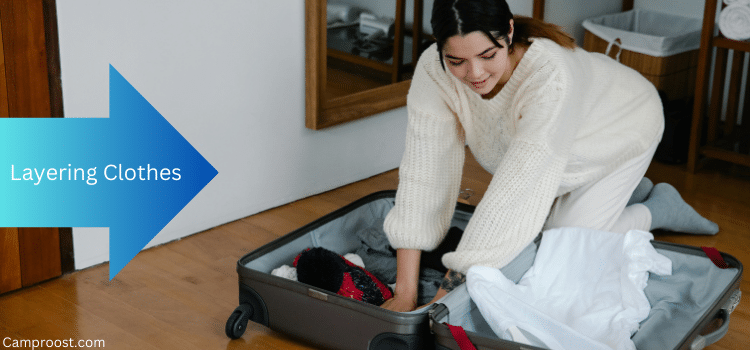
Keep Your Dirty Clothes Separate
To maintain cleanliness and organization, it is essential to separate your grimy garments from the smooth ones. Pack a separate bag or unique phase within your bags to keep used clothes. Consider the usage of scent-evidence bags or sealed plastic baggage to save you from undesirable smells from spreading. This exercise additionally makes unpacking and laundry sorting extra handy as soon as you come back home.

Packing Tips for Specific Camping Activities
Different camping activities may additionally require specific garb objects. Here are a few packing guidelines for diverse outdoor pastimes:
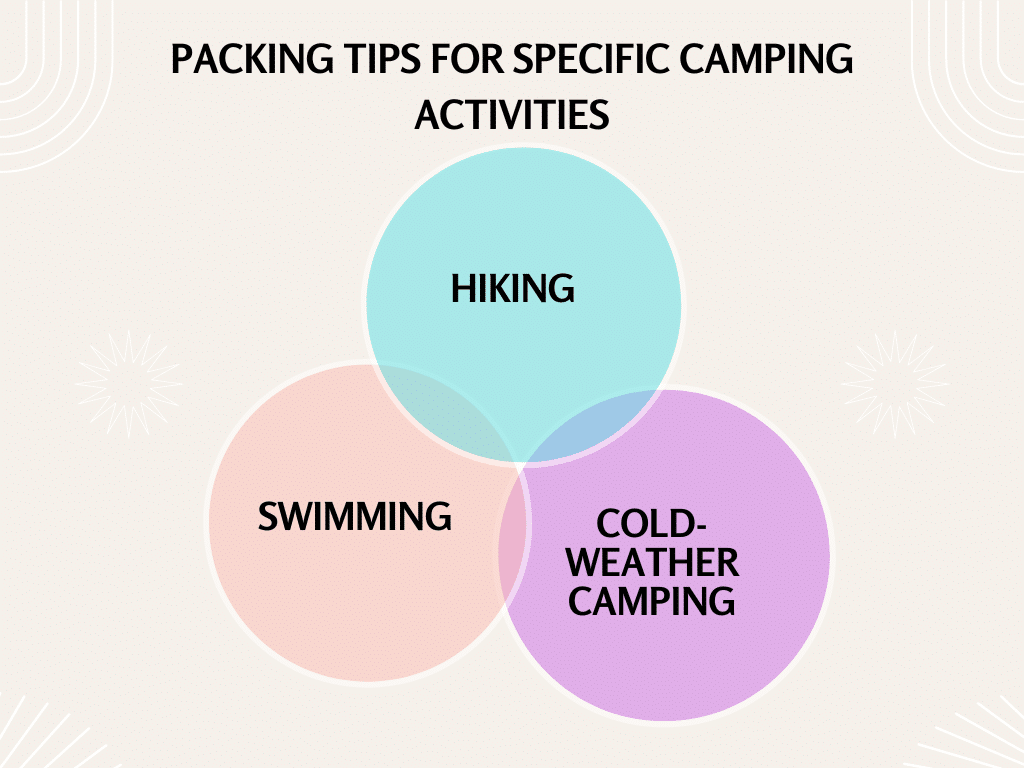
Hiking
Opt for moisture-wicking and breathable fabrics, strong hiking boots, and lightweight layers. Don’t forget to pack a rain jacket and a hat for solar protection.
Swimming (Best Way to Pack Clothes for Camping)
Bring quick-drying swimwear, a towel, and a trade of clothes. Remember to pack. Water footwear if vital.
Cold-Weather Camping
Pack thermal underclothes, heavyweight insulating layers, thick socks, and cold weather accessories including hats and gloves. Invest in an amazing, waterproof winter jacket.
How to Pack Delicate Clothing Items
Delicate clothing items, such as dresses or formal attire, require special attention when packing for camping. Here’s how you can ensure their protection:
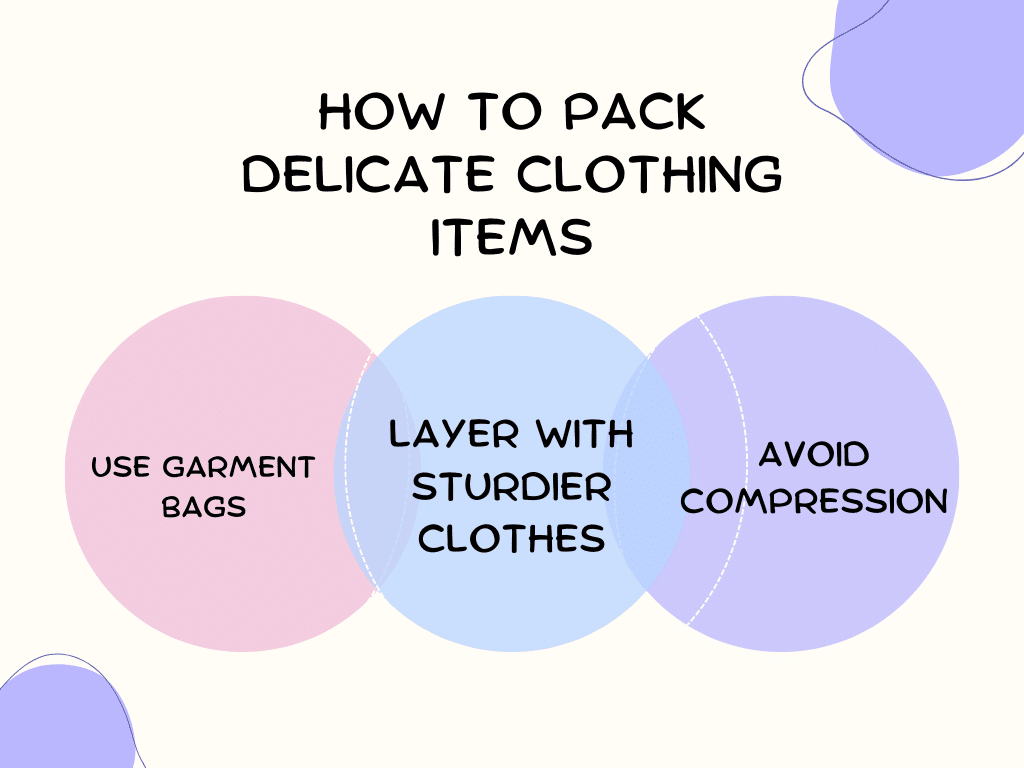
Use garment bags
Place delicate items inside garment bags to prevent snagging or wrinkling.
Layer with sturdier clothes
Sandwich delicate items between sturdier garments to provide additional cushioning.
Avoid compression
If possible, avoid compressing delicate clothes to minimize the risk of damage. Choose a packing method that allows them to retain their shape.
Final thoughts
Properly packing your clothes for camping performs a critical function in ensuring snug and exciting doors are in. By following the hints supplied in this article, you can optimize space, keep your clothes organized, and be properly organized for numerous weather conditions. Remember to select lightweight and brief-drying fabrics, utilize packing cubes or ziplock baggage, and employ the layering technique. With these techniques, you may be prepared for a memorable camping adventure.
In conclusion, packing your clothes efficiently for a camping journey is important for a cushy and prepared adventure. By selecting the right fabric, utilizing area-saving techniques, and thinking about the particular activities you may be taking part in, you may make certain that you have everything you want even by maximizing the available space in your backpack or suitcase. So get equipped to embark on your camping adventure with self-assurance and revel in the high-quality outdoors to the fullest!
You May Like This: THINGS TO DO WHILE CAMPING IN THE RAIN
FAQs
-
What is the best way to store clothes when camping?
The simplest option is to leave garments in your bag. That way they are less likely to get moist or dirty, and you realize exactly where the entirety is. Keep clean clothes in a plastic bag inside your essential bag and carry a separate plastic bag for grimy garments.
-
How many clothes to pack for camping?
The biggest key to packing for the backcountry is layering multi-practical garb. A lot of hardcore backpackers swear through the 2 outfit rule. One set of clothes for trekking and one set of clothes for sleeping, irrespective of how long you will spend within the barren region.
-
Do you sleep in your clothes when camping?
Sleep in comfortable camp garments. My regular approach is to have one set of clothes (moisture wicking and short-drying) for wearing for the day while hiking, driving, or hiking, and every other hotter and greater cushy set of garments for napping in and sporting round camp on less warm evenings.

